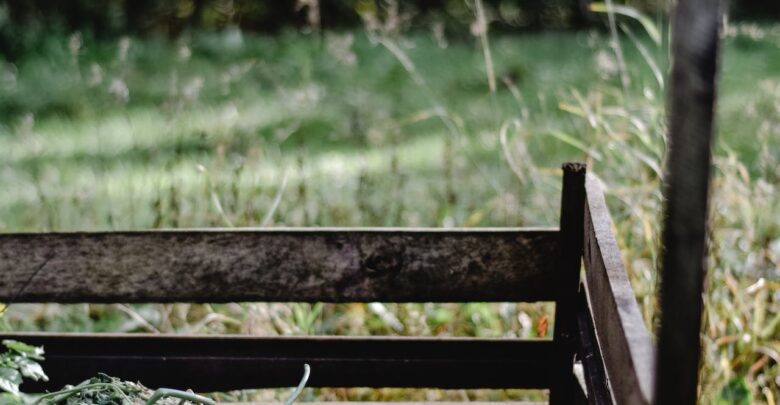
The Importance of Composting in Eco-Friendly Gardening
In today’s world, where sustainability and environmental consciousness are becoming increasingly important, eco-friendly gardening practices are gaining popularity. How to make a compost bin is a important topic. Composting is a fundamental aspect of eco-friendly gardening that allows you to reduce waste and create nutrient-rich soil for your plants. By composting, you not only contribute to the health of your garden but also play a role in reducing greenhouse gas emissions and landfill waste.
Composting is the process of decomposing organic materials, such as kitchen scraps, yard waste, and leaves, into nutrient-rich soil. This natural process mimics the way organic matter breaks down in nature, allowing you to harness the power of decomposition to create a valuable resource for your garden. By composting, you divert organic waste from landfills, where it would produce harmful methane gas, and instead, transform it into a beneficial product.
Benefits of Using Compost in Gardening
Using compost in your garden offers numerous benefits that go beyond just providing nutrients to your plants. Compost improves soil structure, allowing for better water retention and drainage. This means that your plants will receive the right amount of moisture without becoming waterlogged. Additionally, compost enhances soil fertility by adding essential nutrients that plants need for healthy growth.
Another advantage of using compost is its ability to suppress plant diseases and pests. Compost contains beneficial microorganisms that help ward off harmful pathogens, creating a healthier environment for your plants. Furthermore, compost acts as a natural mulch, preventing weed growth and reducing the need for synthetic herbicides. By utilizing compost in your garden, you create a sustainable and self-sufficient ecosystem where plants thrive naturally.
What is a Compost Bin and Why You Need One
A compost bin is a container specifically designed to hold and facilitate the composting process. While composting can be done without a bin, using one offers several advantages. Firstly, a compost bin helps contain the organic materials, preventing them from scattering around your garden. This ensures a neater appearance and makes it easier to manage the composting process.
Secondly, a compost bin helps regulate temperature and moisture levels. The enclosed space creates a microclimate that accelerates decomposition, allowing the organic materials to break down faster. Additionally, a bin helps retain moisture, preventing the compost from drying out and providing a consistent environment for beneficial microorganisms to thrive.
Lastly, a compost bin helps keep pests and animals out of your compost. By having a secure container, you can prevent unwanted critters from rummaging through your compost pile and potentially causing a mess. This helps maintain a clean and controlled composting process.
Also read: Saving Our Precious Coral Reefs: A Call to Action
Materials Needed to Make a Compost Bin
Creating your own compost bin is a simple and cost-effective solution. You don’t need to invest in expensive equipment; instead, you can utilize materials readily available in your surroundings. Here are the materials you’ll need to make a basic compost bin:
- Wooden Pallets or Wire Mesh: These will serve as the walls of your compost bin. You can use four wooden pallets or create a cylinder using wire mesh fencing.
- Nails or Wire: To secure the wooden pallets together or fasten the wire mesh, depending on the materials you choose.
- Lid or Cover: You’ll need a lid or cover to keep rainwater out and maintain the appropriate moisture levels in your compost bin.
- Bricks or Blocks: These will be used to stabilize the compost bin and prevent it from collapsing.
- Gloves and Safety Glasses: It’s important to wear protective gear when handling materials and constructing your compost bin.
Once you have gathered these materials, you’re ready to embark on creating your own compost bin!
Step-by-Step Guide on How to Make a Compost Bin

Follow these simple steps to create your compost bin:
- Choose a Location: Find a suitable spot in your garden where you’ll place the compost bin. Ensure it’s easily accessible and receives a good amount of sunlight.
- Prepare the Ground: Clear the area of any debris or vegetation. Level the ground and remove any rocks or obstacles that may interfere with the placement of your compost bin.
- Assemble the Walls: If you’re using wooden pallets, stand them upright to form a square or rectangular shape. Secure them together using nails or wire. If you’re using wire mesh fencing, form a cylinder by bending the fencing into a circular shape and securing the ends together.
- Stabilize the Bin: Place bricks or blocks inside the compost bin to stabilize it and prevent it from tipping over.
- Add a Lid or Cover: Attach a lid or cover to the compost bin to protect it from excessive rain and maintain the proper moisture levels. This can be a wooden board or a piece of wire mesh.
Congratulations! You have successfully created your compost bin. Now, let’s explore how to maintain and manage it effectively.
Tips for Maintaining and Managing Your Compost Bin
Maintaining your compost bin is key to achieving optimal results. Here are some essential tips to help you manage your compost bin effectively:
- Balance the Ingredients: Aim for a balance between “green” and “brown” materials in your compost bin. Green materials include kitchen scraps, grass clippings, and fresh leaves, while brown materials consist of dry leaves, straw, and wood chips. The ideal ratio is roughly 3 parts brown to 1 part green.
- Chop or Shred Large Materials: To speed up the composting process, chop or shred large materials into smaller pieces. This increases the surface area, allowing for faster decomposition.
- Turn the Compost: Regularly turn the compost using a pitchfork or compost aerator. This helps aerate the pile, providing oxygen to the microorganisms and speeding up decomposition. Aim to turn the compost every 2-3 weeks.
- Monitor Moisture Levels: Your compost should have the consistency of a damp sponge. If it’s too dry, add water; if it’s too wet, add dry materials like leaves or straw. Moisture is essential for the decomposition process.
- Avoid Adding Meat or Dairy Products: While many organic materials can be composted, it’s best to avoid adding meat, dairy products, and oily foods. These can attract pests and slow down the composting process.
By following these tips, you’ll ensure a well-maintained compost bin that produces nutrient-rich soil for your garden.
Also read: What is Carbon Pricing: Understanding Environmental Economics
Turning Waste into Nutrient-Rich Soil: The Composting Process
The composting process is a fascinating natural cycle that transforms waste into nutrient-rich soil. Understanding this process will help you make the most of your compost bin and produce high-quality compost for your garden.
- Stage 1: Mesophilic Phase: This initial phase occurs when you first start composting. Microorganisms, such as bacteria and fungi, break down the easily decomposable materials, generating heat as they consume the organic matter. The temperature of the compost pile rises to around 90-140°F (32-60°C).
- Stage 2: Thermophilic Phase: As the composting process progresses, the temperature of the pile increases further, reaching 140-160°F (60-71°C). During this phase, thermophilic microorganisms, including heat-loving bacteria, thrive and decompose more resistant materials, such as wood and plant fibers.
- Stage 3: Maturation Phase: In the final stage, the compost cools down, and beneficial fungi take over. They break down the remaining organic matter, further decomposing materials and making the nutrients more accessible to plants. The compost darkens and develops a rich, earthy smell, indicating that it’s ready to be used in your garden.
Using Compost in Your Garden: Dos and Don’ts
Now that you have created nutrient-rich compost, it’s time to put it to use in your garden. Here are some dos and don’ts to ensure successful application:
Dos:
- Amend Soil: Incorporate compost into your garden soil by mixing it thoroughly. This improves soil structure, enhances fertility, and promotes healthy plant growth.
- Top Dressing: Apply compost as a top dressing around established plants. This provides a slow release of nutrients and helps retain moisture.
- Mulching: Use compost as a natural mulch to suppress weeds and reduce water evaporation. Apply a layer of compost around plants, leaving a small space around the stem to prevent moisture-related issues.
- Compost Tea: Create compost tea by steeping compost in water. Use this nutrient-rich liquid as a foliar spray or soil drench to give your plants an extra boost of nutrition.
Don’ts:
- Overapply: Avoid overapplying compost, as excessive amounts can lead to nutrient imbalances and waterlogging. Follow the recommended application rates for your specific plants.
- Apply to Unhealthy Plants: Compost is not a cure-all for sick plants. Avoid applying compost to diseased or pest-infested plants, as it can exacerbate the problem. Instead, focus on improving the plant’s health before using compost.
- Use Unfinished Compost: Only use fully decomposed compost in your garden. Unfinished compost may contain pathogens or substances that can harm your plants.
By following these dos and don’ts, you can maximize the benefits of compost in your garden and create a thriving, eco-friendly oasis.
Troubleshooting Common Composting Issues
While composting is a relatively straightforward process, you may encounter some common issues along the way. Here are a few troubleshooting tips to help you overcome these challenges:
- Foul Odor: If your compost smells bad, it may indicate that the pile is too wet or lacks sufficient air circulation. Turn the compost more frequently and add dry materials to balance moisture levels.
- Slow Decomposition: If your compost is not decomposing as quickly as you’d like, it may be due to an imbalance in green and brown materials. Adjust the ratio to provide a more favorable environment for decomposition.
- Pests and Critters: To deter pests and critters, avoid adding meat, dairy, or oily food scraps to your compost. Additionally, consider placing a wire mesh or hardware cloth at the bottom of your compost bin to prevent animals from burrowing in.
- Excessive Moisture: If your compost is too wet, add dry materials like leaves or straw to absorb the excess moisture. Ensure proper drainage and cover the compost bin during heavy rain.
By addressing these common issues promptly, you can maintain a healthy composting process and achieve the desired results.
Conclusion: Embrace Eco-Friendly Gardening with Your Homemade Compost Bin
Composting is a valuable practice that allows you to turn your waste into a nutrient-rich resource for your garden. By creating a homemade compost bin and following the steps outlined in this guide, you can embark on an eco-friendly gardening journey that benefits both your plants and the environment.
Remember, composting is a continuous process that requires regular maintenance and care. With the right balance of green and brown materials, proper moisture levels, and frequent turning, you can transform organic waste into a valuable addition to your garden.
Embrace the power of composting and witness the incredible growth and vitality it brings to your plants. Join the movement of eco-friendly gardening and make a positive impact on the world, one compost bin at a time.





